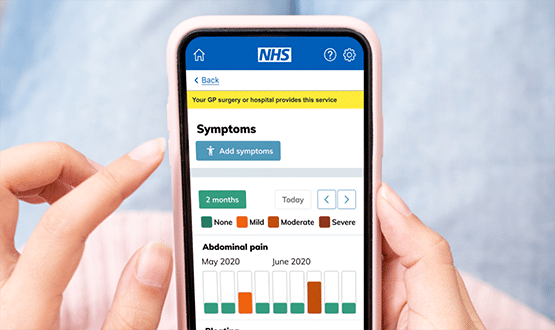Time to dose down
- 21 November 2013

Five years ago, in what was described by the hospital’s radiology manager as a “rogue act of insanity”, a two-year old boy complaining of neck pains was subjected to more than an hour of CT scans at Mad River Community Hospital in California.
Soon afterwards, Cedars-Sinai Medical Center in Los Angeles disclosed that it had mistakenly administered up to eight times the normal radiation dose to 206 possible stroke victims.
The cases brought the problem of harmful radiation doses to the attention of regulators, and now California has a legal requirement that specific CT scanner dose metrics be included in the radiology report for all patients undergoing diagnostic CT scans.
In cases where a patient has received an excessive dose, the state has to be notified. Other US states are likely to follow suit, and radiation exposure monitoring is the subject of a number of sessions at next week’s annual general meeting of the Radiological Society of North America in Chicago.
The need to minimise radiation dose has been taken seriously in Europe for a long time, and, as the use of scans in medicine increases, the issue has become more pressing.
Last month, the European Society of Radiology issued a plan of action for protecting both staff and patients from excessive radiation.
As Professor Jan Casselman, chair of the radiological department at St John’s Hospital, Bruges, says: “There are more and more CT scans, so the danger of giving more radiation is there. That has to make us aware that, as radiologists, we should try to keep this dose down.”
Europe’s approach is very different from the one taken by Californian regulators, says Matt Dunn, head of radiology physics at Nottingham University Hospital Trust:
“In California, they’re quoting doses to individual patients, and we don’t want to do that here because it’s not really meaningful. We want to be able to monitor dose so that we can spot errors or trends.”
A new legal requirement to monitor dosage
This is exactly what will happen when a revision of the EU’s Basic Safety Standard Directive comes into force. Issued in October this year, the latest draft requires member states to carry out national monitoring of patient radiation dose.
They will need to ensure that “arrangements are made for the estimation of doses to members of the public from authorised practices.”
They are also expected to ensure that “new medical radiodiagnostic equipment producing ionising radiation has a device, or equivalent means (of) informing the practitioner of relevant parameters for assessing the patient dose.”
The directive adds: “Where appropriate, the equipment shall have the capacity to transfer this information to the record of the examination.” Member states will have four years to implement this directive into national legislation.
The UK, widely regarded as an example of good practice, already collects dose data. Currently medical physics staff do this by manually entering each dose into a database, which can be analysed to identify equipment differences or poor radiographic techniques.
The data sets are also used for national dose trend analysis by Public Health England. The process is time-consuming and unreliable at both ends, however. To meet the requirements of the EU directive, automated monitoring will have to be put in place.
The Department of Health has announced the creation of a working party, convened by PHE and made up of representatives from the relevant professional bodies, to investigate the best way of putting the legislation into practice.
The eventual aim is to create a national dose registry, which will collect dose data from every trust, providing opportunities to analyse the data, make comparisons and use the information for optimisation purposes.
The working party will decide which data to collect and how to collect it. Dunn says that it will also need to establish a standard set of metadata for analysis purposes – as he points out, one trust may use the term “CT head” while another currently uses “CT brain” for the same procedure.
Buyer beware
Trusts will need to purchase modalities capable of producing dose data in the form of DICOM structured reports that can be exported to the picture archiving and communication system.
A radiation exposure monitoring profile developed by Integrating the Healthcare Enterprise to allow for the exchange of dose data has gained rapid acceptance.
The IHE’s Niall Monaghan warns, however, that while some vendors advertise this functionality in their modalities, they may charge thousands of pounds to switch it on.
“I remember seeing a cath lab which on the display screen had some wonderful dose information, and I was doing a whole load of measurements, thinking I could go to the images after I had stored them and pull all that back, and I was horrified to find that nothing was sent,” he says.
To comply with the legislation, there is no requirement for trusts to purchase dose monitoring software: they simply need to be able to collect the data in a standard format and send it to a central database.
Vendors such as Sectra, GE Healthcare, Radimetrics and PACSHealth, however, have produced sophisticated dose monitoring software, and some trusts are beginning to see the benefits of such solutions. One way around limited budgets, says Dunn, is to make dose monitoring software part of a bigger PACS procurement.
Lowering the dose
Nottingham University Hospital Trust has been using Dosewatch, the GE solution, since May this year, and Dunn says that it has made a huge difference to the hospital’s ability to collect and analyse data.
“Very quickly we looked at head CT, and on one scanner we were able to reduce the doses by 40%, just by comparing the protocols on all our different systems. I did that work in an afternoon. We could have done it before, but I couldn’t have done it in the same timeframe.”
Professor Casselman has had a similar experience. After installing Dosewatch, the hospital set maximum doses for particular types of CT scan, and was able to identify any scans going above that.
“We saw in the first week that someone was an abdomen CT scan and was giving too much dose. Why? We went to check it, and we saw that that nurse was positioning her patients too high in the gantry.”
Within a couple of months, radiologists had identified and addressed several outliers, enabling them to lower the maximum dose.
“You can start working together to get that threshold down, so that the maximum you accept is going down, and you can do that by an optimised protocol, by looking at the parameters that they can change, so that this dose come down, and you still have a good quality of image,” says Professor Casselman.
Dose monitoring software makes a case such as Mad River much less likely, because it allows the hospital to programme the software to set an alert if the dose goes over a particular threshold – something that would never be possible with a manual recording system.
In time, automated dose monitoring seems likely to become a normal part of the landscape. “Once people start connecting it up, some horror stories will come out,” acknowledges Dunn.
“That’s a good thing in that we’ve been able to find a problem and fix it, whereas before we didn’t know whether we had a problem or not. I think the regulators are aware of that – we’re going to shine a light in the back of the closet and don’t know what we’ll find in it.”




